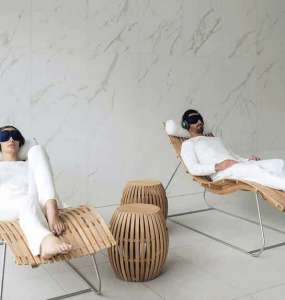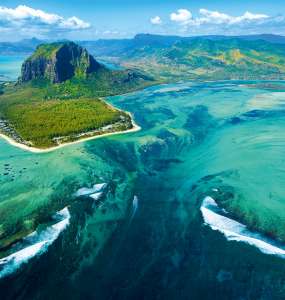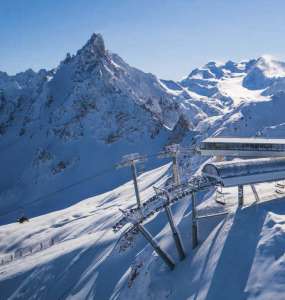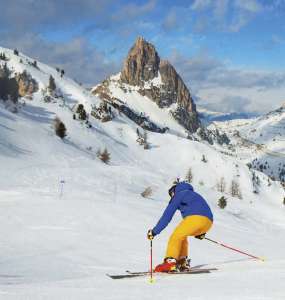Legends of Mykonos
Mykonos has a reputation as an island of hot parties, fashionable establishments and a star-studded crowd. And this is what we devoted our previous articles to. But today we offer to look at Mykonos from another side.
.jpg)
Driven by the wind
Windmills were actively used on Mykonos from the 16th century until the advent of electricity in the early twentieth, but they still define the silhouette of the island. Their canvas sails were powered by the northern Meltemi wind. 16 of the 25 windmills have survived to this day. Some have been renovated into comfortable apartment hotels. Others are open as museums or photo locations. The most popular are the windmills in the main city, Khora, on the west coast. In the evenings, romantics and ordinary tourists admire the sunset over the sea and "Little Venice" here.
A little north of the windmills of Hora is the church of Panagia (Theotokos) Paraportiani, the most famous of about a thousand churches on the island. It consists of five churches: four next to each other, and the Church of the Mother of God is like a crown above them. They were built at different times. The oldest - at the end of the 14th century, others in the 16th and 17th centuries. with further renovations. They gather in the square near the church closer to sunset. Then you can take a stroll along the port, take a seat at the 180º Sunset Bar, or watch classics and new releases at the open-air Cine Manto cinema.
.jpg)
White and blue: where does this tradition come from?
The combination of these colors is symbolic for Greece. But for the Cyclades it has a greater meaning. Since wood was always hard to come by on the rocky islands of the Aegean Sea, the locals built houses out of stone. And, as you know, dark surfaces attract heat, so in the summer it was incredibly hot in the house. And in order to do this, the islanders began to whitewash the facades. In addition, limestone has a pronounced antimicrobial effect, which was quite appropriate in times of epidemics. But the frames and doors were painted blue because this paint, due to its composition, was cheaper than others and was made from improvised materials.
During the military dictatorship in the second half of the last century, the Greeks were obliged to use white and blue (the colors of the flag) to increase the patriotic spirit. And after the relaxation of the requirement, the fact that these colors became the business card of Greece for tourists worked. So, although we see other combinations, the vast majority of houses remain in the traditional range.
.jpg)
Away from the crowd
Mykonos is known for its beach parties. But this does not mean that here music is blaring from everywhere and everyone is dancing until dawn. There are beaches that are calm, quiet, with a relaxed atmosphere: wide and spacious, designed for surfing and sheltered from the winds, organized and wild. Next to Chora, there is an equipped sandy beach of Agios Stefanos with a gradual increase in depth. The beach offers a wonderful view of the sunset and nearby is the sacred island of Delos, which is part of the UNESCO World Heritage Site. It is believed that Apollo and Artemis were born on Delos. Here you will see the ancient theater for 5,500 spectators, the Lviv Terrace, the Temple of Isis, the Theater Quarter and the House of Dionysus, the Archaeological Museum. So be sure to devote time to such a journey into the past.
.jpg)
Next to the beach of Agios Stefanos on a high hill is the 19-meter lighthouse Armenistis. It was installed in 1887 and equipped with a powerful searchlight, which was noted at the World Exhibition in Paris. Today, people come to the lighthouse for the observation deck.
In the western part of the island is the quiet beach of Kapari, where you can swim and admire the sunset away from other vacationers. Ideal conditions for surfing, kite-surfing and windsurfing on the beaches of Ftelia, Korfos and Kalafati. For family vacations and horseback riding, there is nothing better than Fokos. The horses of the local club have been saved from human cruelty, their comfort is taken care of here, thanks to which tourists also feel in harmony with nature.

If you like diving, you will have a lot to see on Mykonos: reefs, caves and two sunken ships. The Peloponisos River has been under water for almost a hundred years, and the ship itself was built in the second half of the 19th century. In addition to a variety of fish, starfish and octopuses, here you can meet stingrays, rare monk seals that live in underwater caves away from tourist beaches. And from May to September, if you are lucky, you will meet sperm whales.
Instead of five-star chic
The second most important city of the island is Ano Mera, and here you will be offered an alternative vacation. Instead of fashionable hotels and clubs, there are farms and agrotourism. And this is a great option for a vacation with children, especially if they spend most of the year in a big city. There are many domestic and domestic animals on farms: cows and goats, donkeys and sheep, rabbits and turkeys, dogs and cats. You can play with them, you can feed them. There are stables with beautiful well-kept horses (because it is primarily a family farm, not a business), and they will teach you to ride horses, organize a horse ride on the beach and a picnic by the sea.
.jpg)
Traditional feasts of products grown by your own hands, with homemade wine and honey are waiting for you. If you visit on harvest days, you can join. And you will also be taught to cook Greek dishes, make cheese and bake bread in the oven.
And most importantly, you will get to know the historical and folk face of Mykonos, where sincere hospitality, unity and family values reign, and you will simply relax your soul on the seashore.




